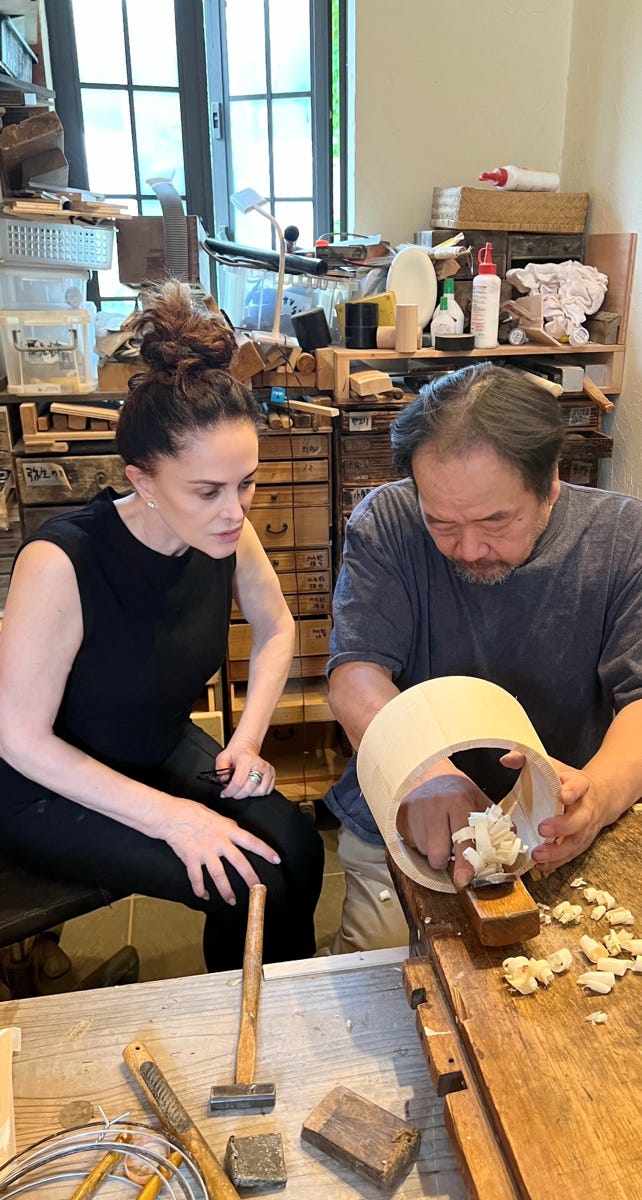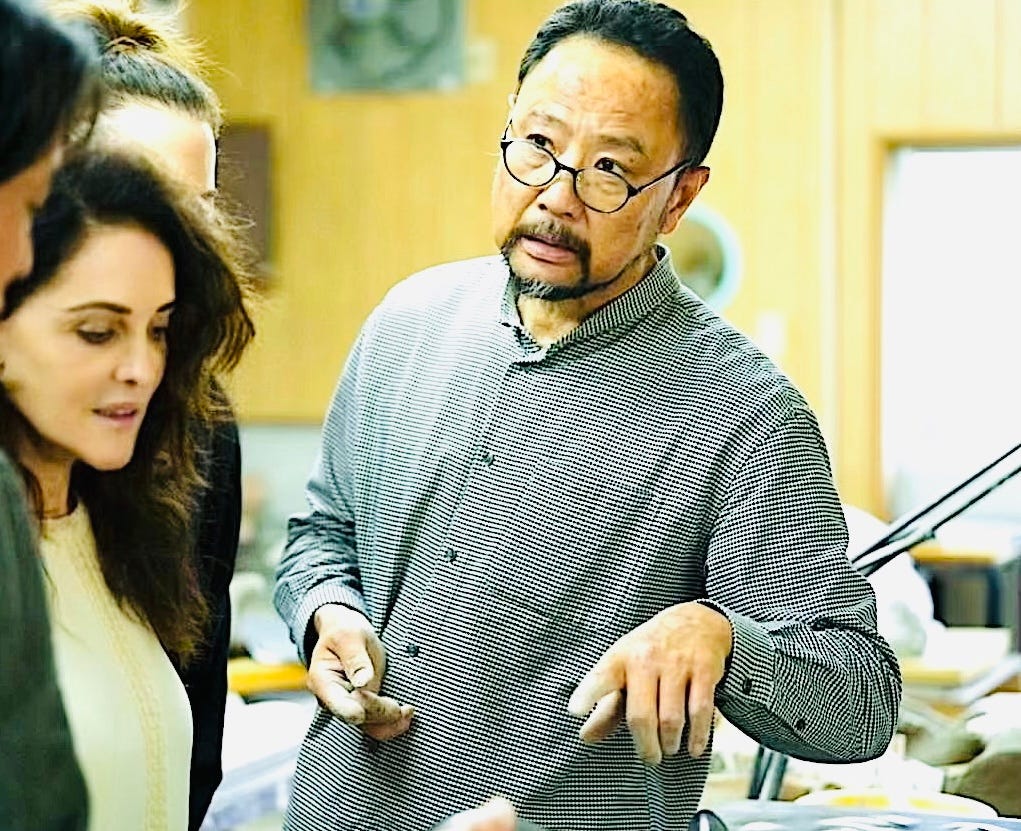Japan: The Design Expedition, May 2025
Introduction
Japan has become one of the most intriguing hot spots in the global world of contemporary design, enjoying a spectacular and unparalleled era of creativity. With an emphasis on the supreme beauty of the handmade, a generation of artists has brought a fresh perspective to traditional Japanese crafts, developing ancient skills to achieve new heights of personal and artistic expression while breaking away from traditions and conventions in bold and innovative ways. They have been utilizing their crafts – ceramics, textiles, lacquer, bamboo, wood – as tools in creating innovative, personal contemporary art.
As the design conversation has grown increasingly global, cross-disciplinary, and multifaceted over the past few decades, I’m baffled over the lack of attention paid by Western audiences—architects, interior designers, media, auction houses, and collectors—to the extraordinary production of Japan’s kogei (crafts) tradition. Contemporary Japanese ceramics are also excluded from scholarship, rarely addressed by art historians. It is odd, as this body of contemporary handcrafted work embodies values most highly celebrated in Western collectible design today, from artistry and craftsmanship to innovation, sustainability, narrative creation, and personal expression. By infusing traditional methods with a twist, Japanese craftspeople have brought a fresh sensibility, intriguing ideas, and spectacular artistic creativity.
This May, I went to Japan for the third expedition of discovery, traversing small mountains, rivers, and long, harrowing treks to reach the small towns and villages where some of Japan’s most intriguing talents work today. I began the journey in the Mino Province in central Japan, the cradle of Japanese clay art since the 12th century, where artists have reinvented ceramics, producing fabulous contemporary expressions. The next stop was the Shiga Province, renowned for its ceramic traditions and local clay and anagama kilns. From Kyoto, the largest concentration of craftspeople who bring new and innovative approaches to traditional craft, I moved through Osaka to Hiroshima and to Hagi, Izumo, and Tottori on the West Coast, Japan’s most historic and renowned craft regions.
Hosted in enchanting homes, gardens, and studios, I spent hours with artists whose work is captivating in its contemporary allure, most recognized by the world’s museums. As I observed them at work in their studios, I listened to their stories and heard about their respect for heritage, their connection to Japanese traditions of crafts making, and their passion for preserving and perfecting their crafts, as well as for evolving as artists. Some honed their skills apprenticing with masters, while others were born into legendary families of makers. While the collective memory of the Mingei Movement (‘Folk Art Movement’) is present everywhere, contemporary kogei is created far from Yanagi Soetsu’s iconic theory. While he was leading a national campaign for the revival of the crafts, handmade by unknown craftsmen, free of the desire to establish their own signature, Japanese artists today explore how to express their own identity, devising personal languages through crafts. They devote their lives—with astonishing energy—to transcending conventions, taking kogei to new horizons. It is the international art market, which has helped these artists to push boundaries, resulting in ambitious and spectacular creations.
This research expedition into the world of Japanese kogei was made possible thanks to the generosity of 22 artists, the ambassadors, the pioneers, whose work exemplifies the new spirit of the handmade of Japan. It was also made possible thanks to the art dealers, whose efforts have put Japan on the map of the global art world: A Lighthouse called Kanata, Sokyo Gallery, RW Guild, Galerie Mingei, Keiko Art International, Pace Gallery, Les Ateliers Courbert, Moderne Gallery, TAI Modern.










